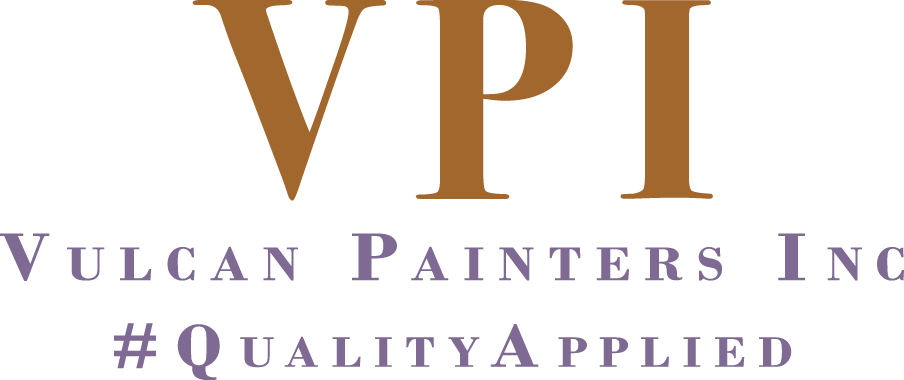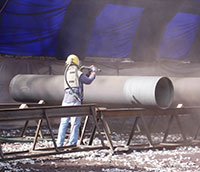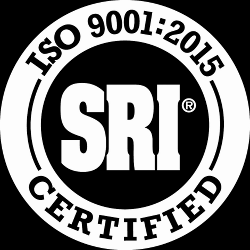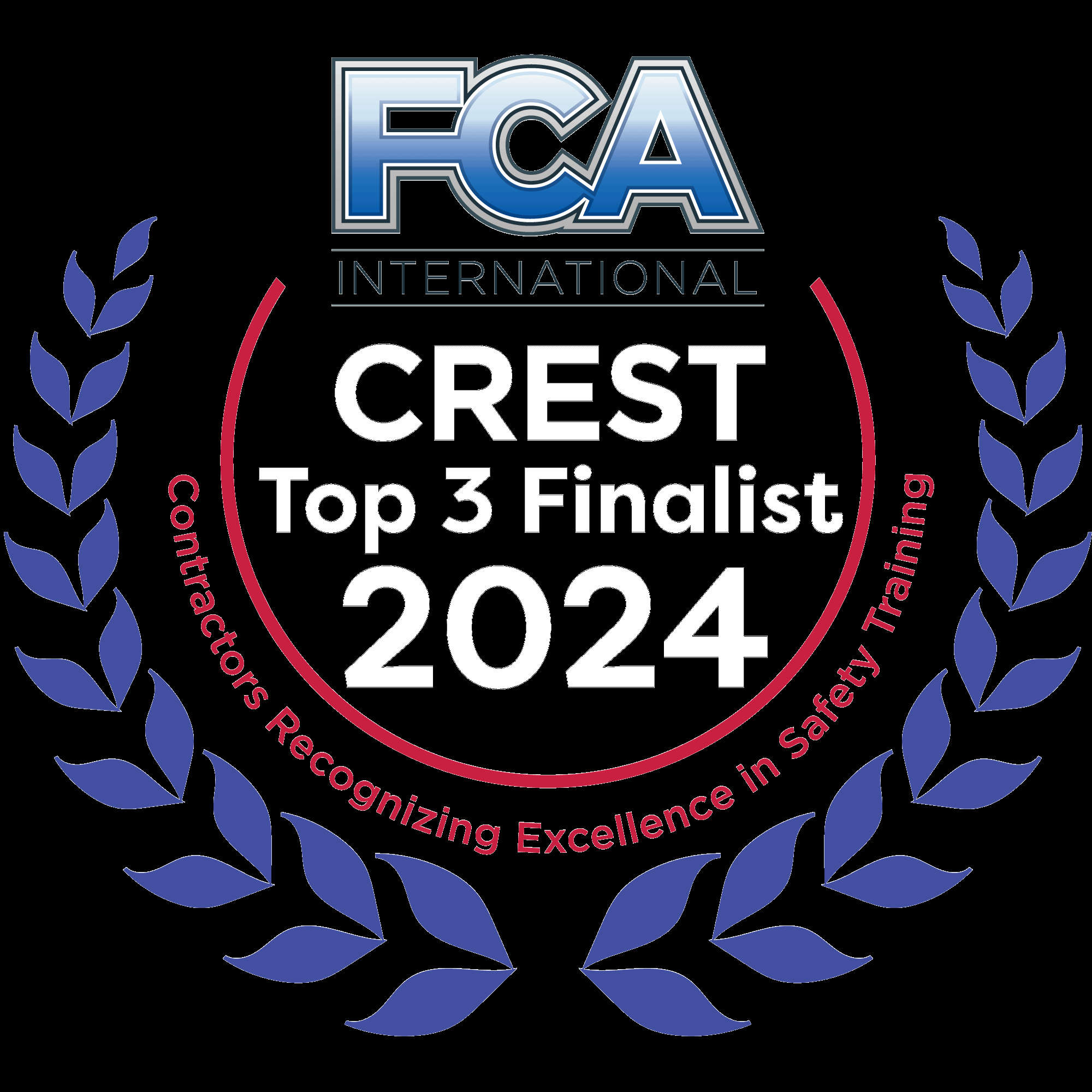Blasting and Surface Preparation
Industrial Blasting Services
Beyond appearance considerations, failing protective coatings expose your facilities and industrial equipment to moisture, chemicals, and other corrosive elements. This affects how your equipment performs and how long your facility can last, which can create the need for repairs and downtime because of it.
At Vulcan Painters, we provide industrial blasting services to remove old coatings and prepare the surface for an application of protective coatings. Whether it’s a restoration project or new construction, blasting services improve the expected life of your facility’s protective coating system.
Surface Condition Assessment
With proper surface preparation, we can better understand the job at hand and identify structural weakness, rust, corrosion, and other contaminants that can affect the adhesion and lifespan of new coatings.
The most important step in any protective coating system application is the surface preparation.
Our blasting surface preparation craftworkers can designate the most appropriate blasting method depending on the circumstances. For example, heavily corroded surfaces require aggressive techniques like abrasive blasting while surfaces with minimal corrosion may only need light industrial surface cleaning and spot repairing to prepare them for protective coatings.
Old Coating Removal
Rather than just removing visible coatings, our experts go beneath worn-out layers to identify hidden issues like rust, corrosion, and contamination.
This step of abrasive blasting allows us to choose an appropriate blasting technique depending on the type of coating and level of damage.
Dealing with contamination or corrosion issues also provides a clean surface for new coatings to adhere to. This can help prevent cracking, peeling, and premature breakdown of the protective coating system.
Removal of Contaminants
Our technicians take the time to identify any harmful surface contaminants that can affect coating performance. Contaminants like oil and grease prevent coatings from bonding to surfaces, which can increase the risk of failure once a coating is applied. As a result, the protective layer can peel away, exposing your surfaces to damaging conditions. We check for any chlorides that can attract moisture and cause rust to form below the coating.
Another threat is chemicals and acid residues—even the smallest traces can damage the protective layer and underlying surface.
Surface Profiling
You need more than a just high-quality coating to achieve long-lasting protection: The underlying surface should also be adequately prepared for optimal adhesion.
Profiling goes beyond simple surface cleaning. It involves creating the perfect texture for protective layers to adhere to. Inadequate profile can cause your coatings to peel away, exposing your surfaces to harsh elements.
On the other hand, proper profiling strengthens the bond between the coating and the underlying surface, providing a defense against chemicals, moisture, abrasion, and coating failures.
Our abrasive blasting services are customized to every project's needs. For example, rougher profiles may be required for thicker coatings. Conversely, finer profiles may go well with thin-film protective coatings as specified.
Additionally, our techniques deliver a consistent surface profile for a more uniform finish.
Monitoring Environmental Conditions
Moisture can disrupt even the best surface preparation job. When water is trapped during surface preparation, it can cause bubbling, peeling, and blistering as it tries to escape. These defects affect coating performance, exposing the surfaces to potential flash rust
At Vulcan Painters, we use specialized environmental techniques and technologies to remove moisture and maintain the prepared surface for a new coating. Additionally, we customize our environmental controls and techniques to the specific conditions of your project. Take the case of high humidity areas—moisture from the air settles on blasted surfaces almost immediately, exposing our infrastructure to flash corrosion. As such, we rely on air blowers, dehumidifiers, heaters, and protective barriers to maintain surface preparation and prevent rust spots.
The type of surface also determines the drying technique. For instance, steel is more vulnerable to rust when exposed to moisture while concrete can absorb water and cause adhesion difficulties.
Why Choose Vulcan Painters
Certified Expertise
Our team has the training and credentials you need for your abrasive blasting job. With over seven decades of industrial painting experience and an extensive portfolio to show for it, you can be confident in our abilities to deliver outstanding results on every project. Here are some credentials to back our expertise:
- ISO 9001: 2015: This certification shows we meet regulations, ensure customer satisfaction, and are always continuing to improve.
- SSPC QP3: The certification assesses a contractor’s expertise in protective coating surface preparation and application in a shop facility. Before accreditation, the Association for Materials Protection and Performance (AMPP) evaluates a contractor’s proficiency in areas like quality and process control, management procedures and responsibility, inspection and testing, Measuring & Test Equipment (M&TE), and data control.
Advanced Technology and Safety
Vulcan Painters uses the latest industrial blasting technologies to deliver the best results regardless of the substrate.
Vulcan Painters prioritizes safety first with the work we do. We complete risk assessments through Job Hazard Analyses (JHA) and daily Job Safety Analyses (JSA). Through this, we can identify and minimize potential hazards, which helps keep everyone safe. We also invest in ongoing education. We train our teams on the latest safety standards to prepare them for challenges that can come about on the job.
We use environmentally friendly practices to ensure regulatory compliance and reduce our ecological footprint. In addition to responsible waste management, our advanced containment systems reduce dust and emissions for better air quality.
Contact Us Today
At Vulcan Painters, we know how critical surface preparation is to the success of your next project.
That's why our AMPP-certified blasting craftworkers deliver superior surface preparation and coating services to protect your structures and equipment from the threat of corrosion. Whether you need a quote, consultation, or have questions about our industrial painting and blasting services, we're here to help.
Contact Vulcan Painters today and enjoy quality, precision, and reliability in every step of your surface preparation.





 ISO 9001:2015
ISO 9001:2015









